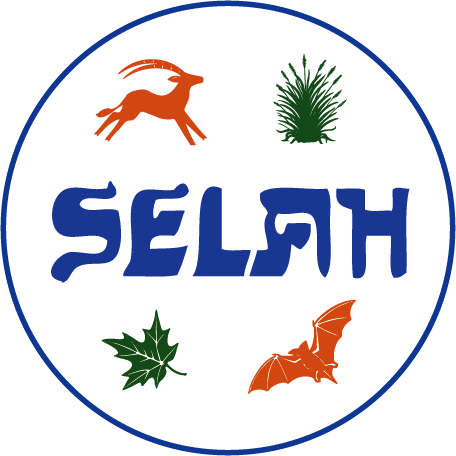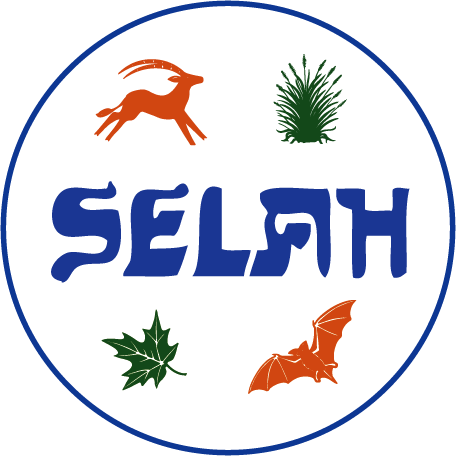50 Years of Conservation
Restoring, Preserving, Educating
Selah, Bamberger Ranch Preserve is a 5,500-acre ranch in Blanco County that has been restored to its original habitat. Our mission is to teach ethical land stewardship by example and outreach. We offer seminars for landowners and serve as a research lab for botanists, zoologists, and other scientists. We provide hands-on science classes and nature camps for school children — 2,000 children in a typical year. Our public tours and workshops attract birdwatchers, photographers, and animal and plant enthusiasts.
After leaving the Ranch, many visitors are inspired to change consumption habits and better conserve natural resources. They leave with a vision of harmony with the land. They realize that the Ranch tells a story of hope: Given the chance, Nature can heal itself. Nature can heal us.
“The only place success comes before work is in the dictionary.”
- J. David Bamberger, Founder and Chairman Emeritus
Our Team
-
J. David Bamberger
Founder and Chairman Emeritus
In 1969, Mr. Bamberger found this piece of land we now know as the Selah, Bamberger Ranch Preserve.
-
Weldon "Rusty" Yates
Chairman of the Board
Rusty has always had a passion for land stewardship, open space preservation and education.
-
![]()
April Sansom
Executive Director
April holds a PhD in Environment and Resources from the Gaylord Nelson Institute for Environmental Studies at the University of Wisconsin-Madison.
-
Steven Fulton
Ranch Manager
As the Ranch Manager, Steven’s main job role is to oversee the management of the 5,500 acres of land that comprises the BRP.
-
Lois Sturm
Administrative Assistant
Lois has always had a passion for the beauty of nature and first came to the ranch for the Fall Color’s Hike, where Mr. Bamberger hinted at hiring her on.
-
Francisco “Pancho” Coronilla
Land Steward
As the BRP Land Steward for almost two decades Francisco’s job roles have diversified over the years. He oversees general land stewardship and management, as well as animal care for our cattle and Scimitar-horned Oryx herds.
Directors and Advisors
From left to right: Joanna Rees, Former Executive Director Colleen Gardner, Dodge Bamberger, Administrative Assistant Lois Sturm, Pam Reese, David K. Bamberger, J. David Bamberger, Phil Ferguson, Susan Downey, Pat Durbin, Rusty Yates, Chap Hutcheson, Bob Cocke, Doug Anderson. Not present: Nourah Caskey, Kerby Confer, Anne Donovan, Jeff Francell, Alex Robinette, Lydia Saldana, Mary Wallace, and Ira Yates.
Selah History:
In the Beginning
In 1969, J. David Bamberger sought to buy the worst piece of ranch land he could find in the Hill Country with the specific intention of restoring it back to functional health. For nearly 50 years the 5,500 acre ranch has become one of the largest habitat restoration projects in the state, winning numerous awards (Soil and Water Conservation Service, Texas Forest Service, National Arbor Day Foundation, the Nature Conservancy of Texas, Texas Wildlife Association, Leopold Conservation Award, Texas Parks and Wildlife Department’s Lone Star Land Steward, National Private Lands Fish and Wildlife Stewardship Award, to name a few).
With the removal of many of the Ashe juniper and the replanting of native grasses, long absent springs are now constantly flowing. The major spring produces an average of 3 gallons per minute (4,320 gallons/day) and furnishes all the water used by the ranch and the center, three households as well as for agricultural use. Overflow from this spring along with other smaller springs and seeps produce the headwaters of Miller Creek which flows into the Pedernales River, which then flows into the Colorado River, the surface supply for the City of Austin 60 miles away.
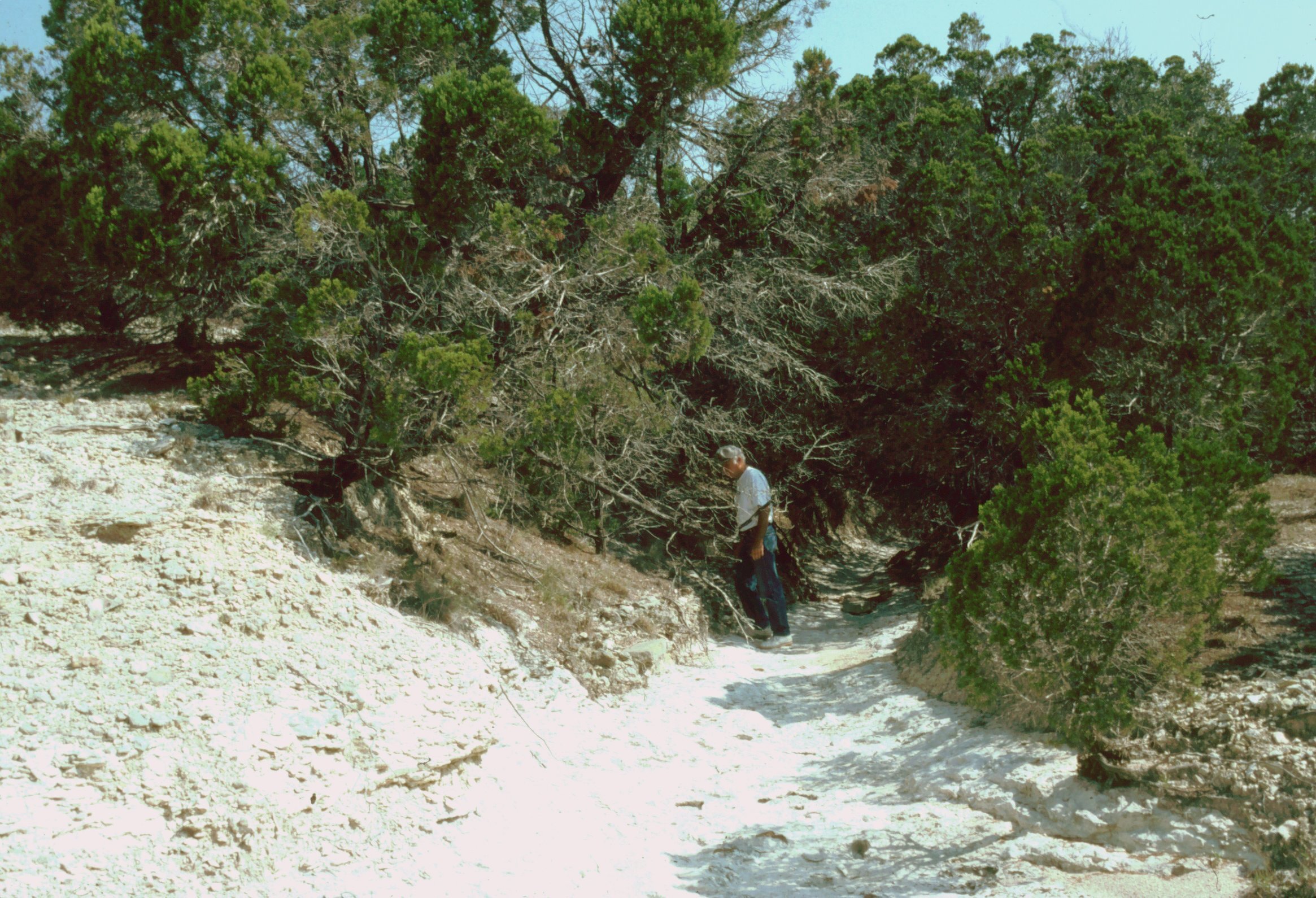
J. David, 1973 Airstrip Pasture. Illustrates evidence of dramatic soil erosion and no surface water flow.
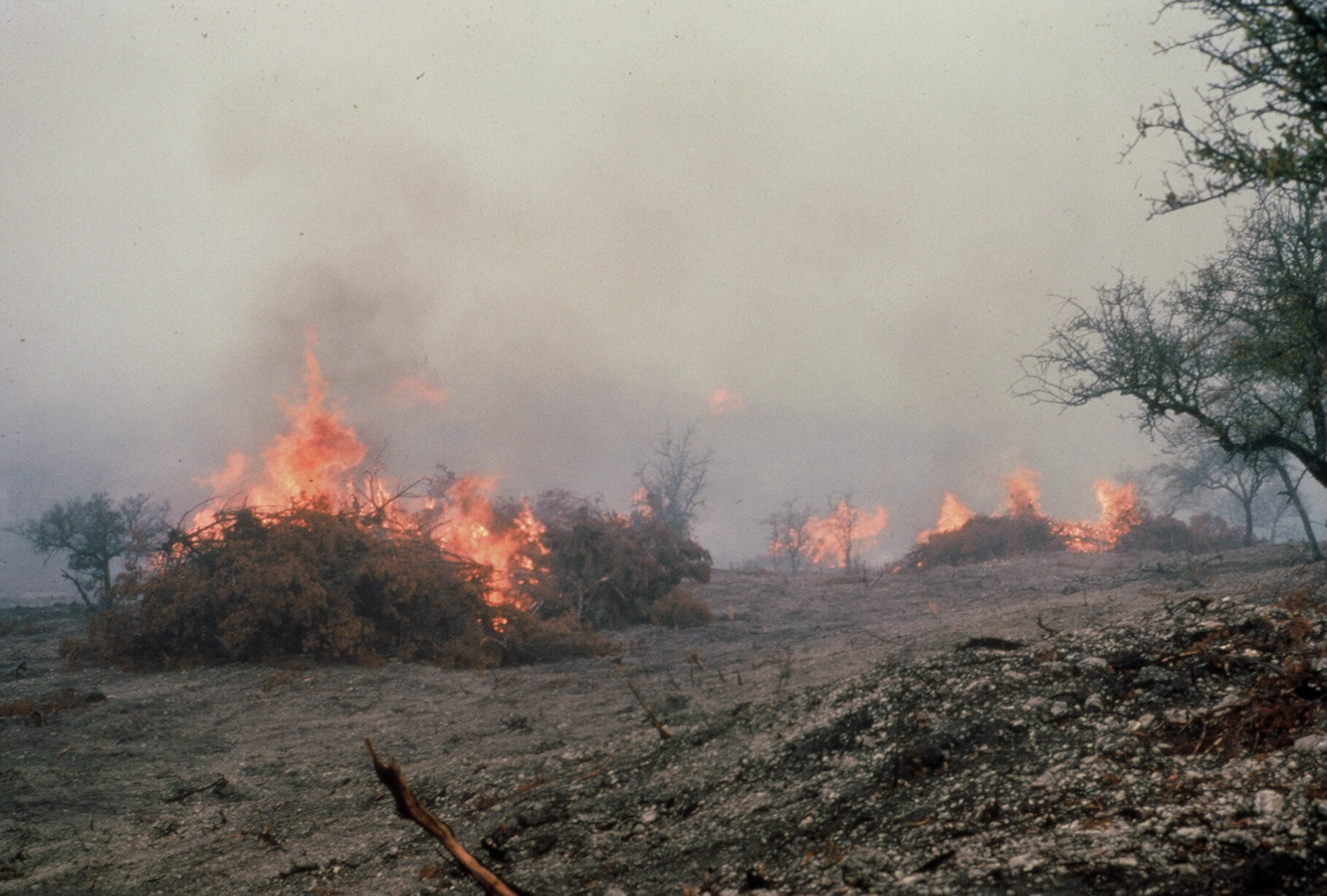
Burn piles circa 1974. This practice is not recommended today. Large piles of cedar were burned and smoldered for weeks.
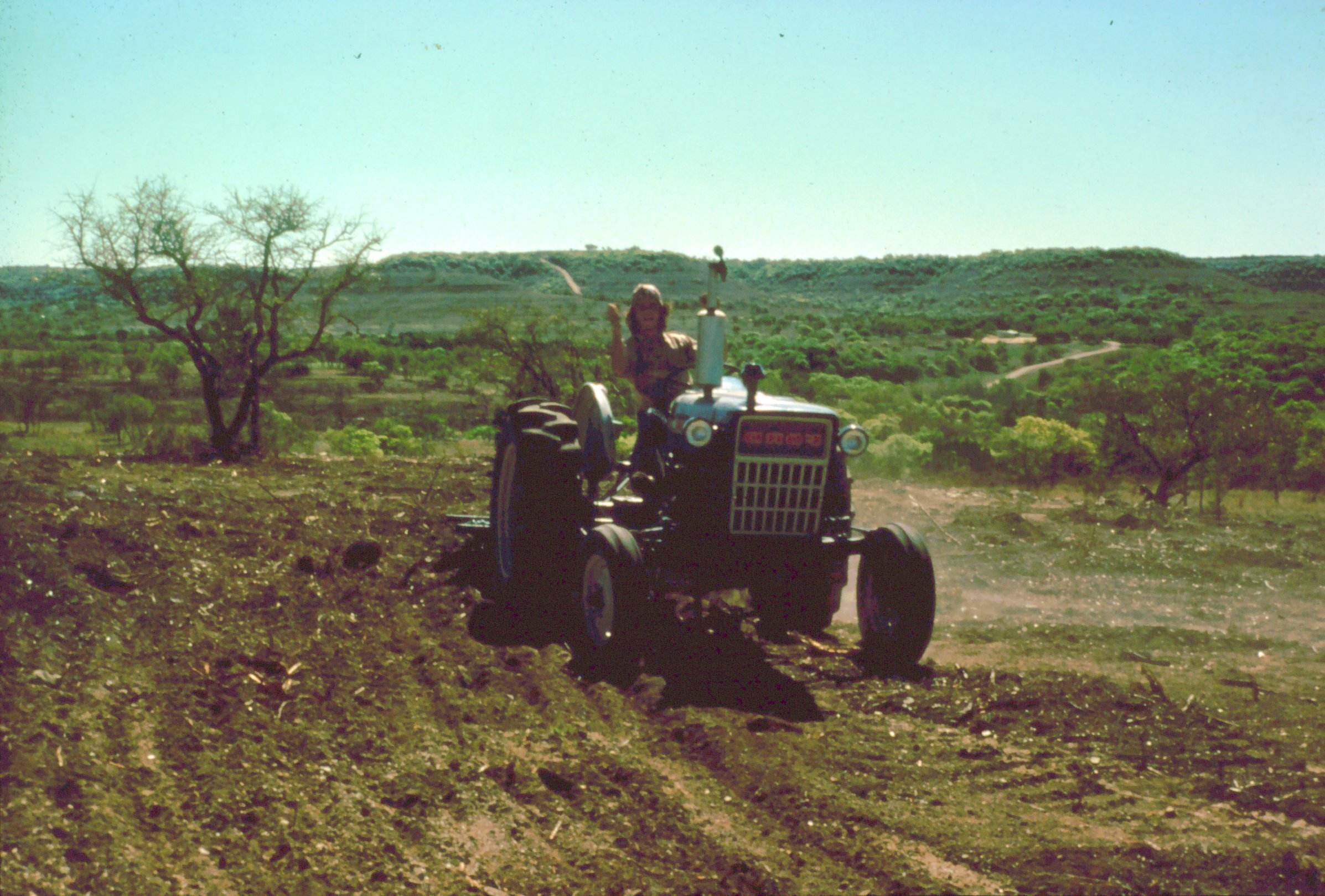
Doug Bamberger, J. David's son, preparing remaining soil bed for grass seed distribution.

J. David sowing grass seed circa 1975.
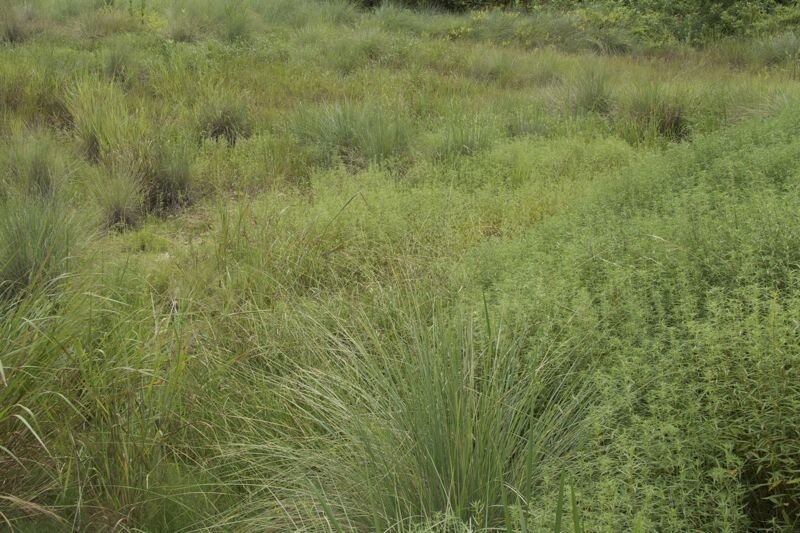
Lindheimer Muhly grass is a good indicator of clay soils and presence of ground water by seep/spring areas.
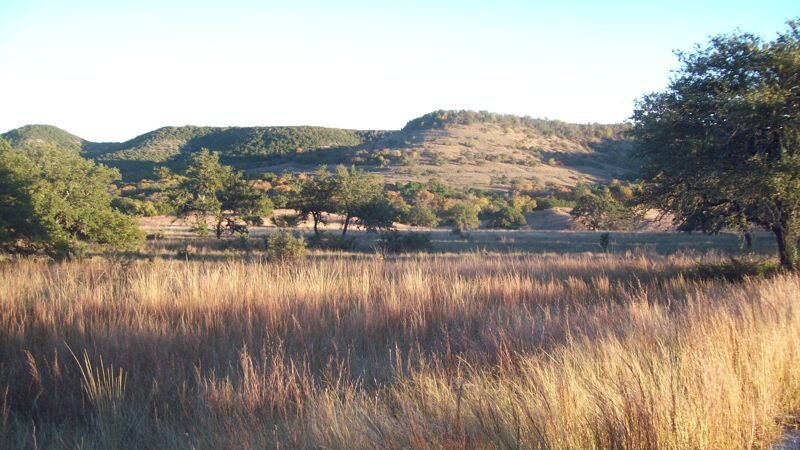
Iconic Texas Hill Country today. Example of our current land management goals — a rich diversity and balance of deciduous trees, juniper, grasslands and wildflowers.

Spring-fed stock tank today. Headwaters to the main tributary branch of Miller Creek.
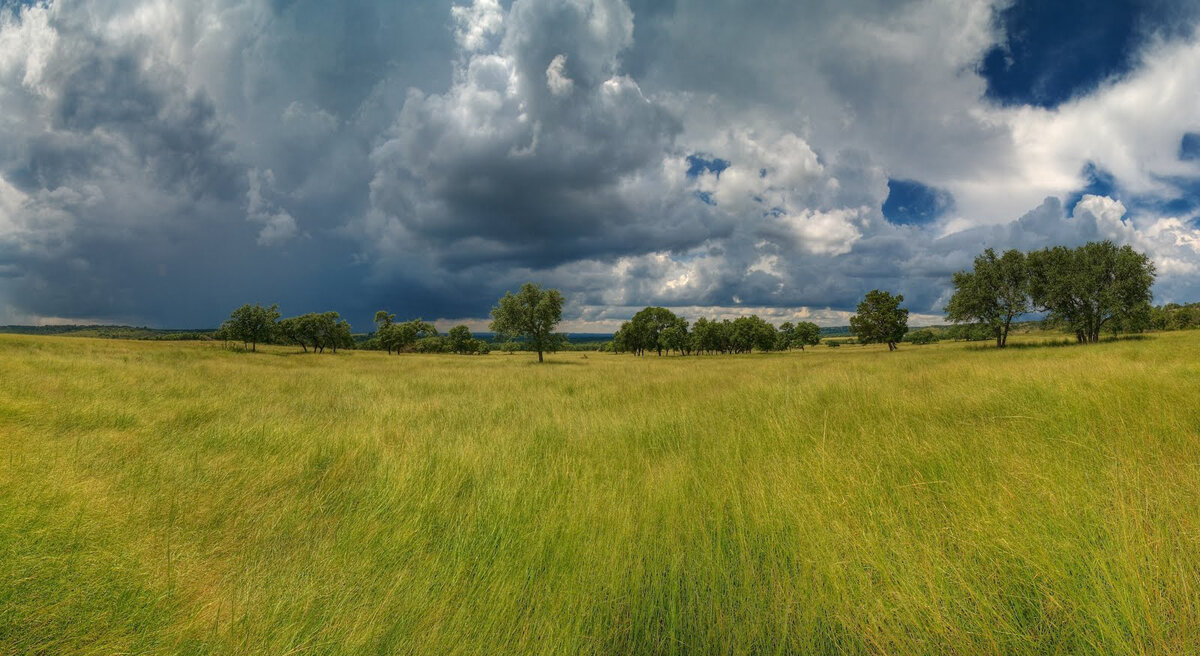
Bamberger Ranch Preserve. West slope middle grassland.
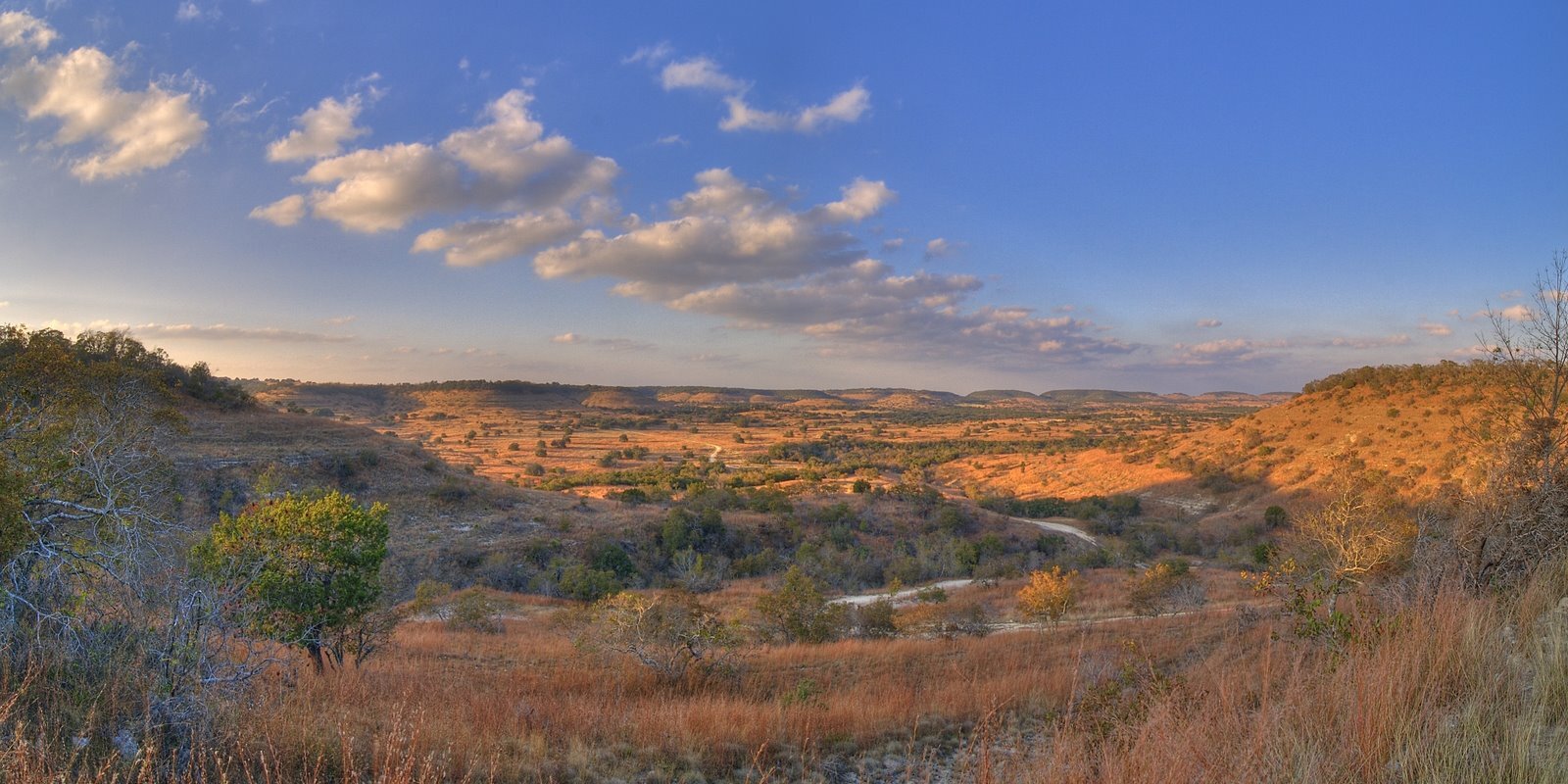
Bamberger Ranch Preserve. Main valley overlook.
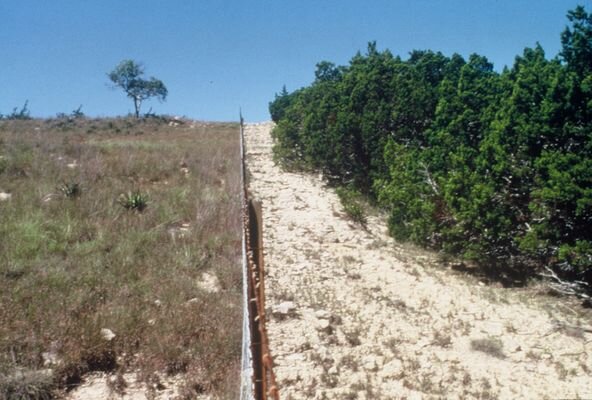
Grass/cedar fence line. Depicting Selah vs neighbor where no restoration had taken place. Published in Austin American Statesman in 1996.
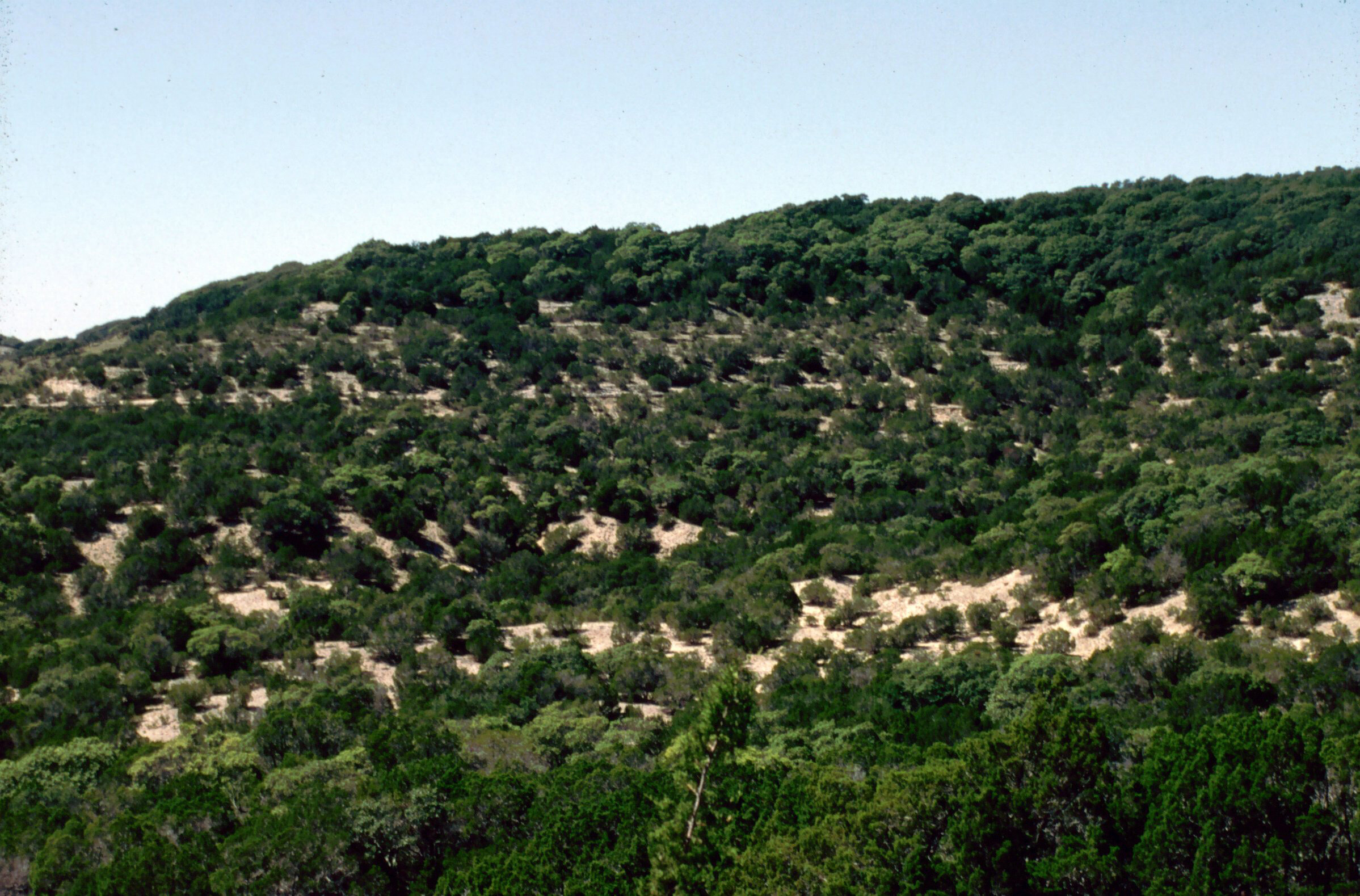
1973 Airstrip Pasture, part of the original 3000 acres purchased in 1969 and the area where staff described the conditions as a wall-to-wall cedar thicket.











Then and Now:
A Natural Perspective
Bamberger Ranch’s original purchase of 3,000 acres in 1969 is where the majority of the cedar clearing took place. The remaining 2,500 acres was purchased in pieces over the next several years to what is now a 5,500 acre habitat restoration and wildlife preserve.
Birds
Early bird surveys 45 years ago documented under 50 species. As birds are good indicator species, you can glean an idea of what kind of condition your land is in. The current species list is up to 221 species, demonstrating diversity and vast improvement in habitat conditions.
When the ranch was predominantly a cedar brake, that is basically one type of habitat: forest. When you clear out and add native grasses, you basically expand your habitat range to greater diversity: forest (as there is still about 15% of the ranch in a cedar brake type of condition), grassland, riparian, and then “edge” habitat — that transition area of one habitat type to the next, which is very important to wildlife.
Total counts now include the Bald eagle and the Golden eagle, but probably more important for the Texas Hill Country, we have many nesting pairs of the endangered song bird, the Golden-cheeked Warbler (GCWA) and the recently delisted Black-capped Vireo (BCVI)— both of which were not documented here prior to habitat restoration. More than 28 total sightings of nesting pairs of the GCWA were documented in 2020.
Deer
Deer harvested over 40 years ago had an average field dress weight of 55 pounds. The deer were very small and unhealthy, due to lack of forage diversity. Bucks now consistently field dress at an average of 115 pounds with the record in 2013 being 156 pounds.
Cattle
Cattle, in 1969, did not have much grass to eat when the ranch was predominantly covered in Ashe juniper. Soil conservation agents told J. David he could run one animal unit per 41 acres. An animal unit is equivalent to one 1,000-lb. beef cow and calf pair.
Now when rainfall conditions are good, we could, if we chose to, run an animal unit per 21 acres. (However, for the past several years we have experienced frequent and lengthy droughts and the decision was made in December 2011 to remove all the cows and goats for an indefinite period of time.)
Water
Most importantly, prior to habitat restoration, there was no surface water or live creeks on the ranch when Mr. Bamberger purchased the property. He even tried to start his own water well drilling business — drilling 7 wells around the ranch 500 feet deep and did not get a drop of water.
After restoration, there are now 27 stock tanks (or ponds and lakes) and countless springs. Eleven artesian springs are “cased” to utilize for domestic purposes or livestock.
Being at the top of its watershed, Miller Creek originates on the Bamberger Ranch. Our stretch runs year-round except in times of extreme drought conditions. But even in times of drought, the most important springs that supply all the water to four households, our center and two cabins have never gone dry since habitat restoration.
The work and history of the Bamberger Ranch Preserve is attributable in large part to the original employees: Leroy Petri, ranch engineer; William “Buddy” Francis, livestock manager; Randy Lenz, wildlife manager; and Jim Rhoades, arborist. Randy left the ranch in 1999 to pursue the real estate industry and Buddy retired in 2000 after 27 years with the ranch, and Leroy worked with J. David from 1970 through to his passing in 2020. Jim Rhoades is past board member and continues to advise and participate in workshops on the ranch.
The Modern Conservation Ranch Model
The Bamberger Ranch hosts an average of 3,000 visitors annually through school programs, group tours and landowner workshops. However, the income generated from agricultural practices and educational programs do not offset the total costs of operation. In 2002, in order to protect the ranch from future development, J. David and Margaret Bamberger filed for 501(c)3 status and created the Bamberger Ranch Preserve and established an 18-member board of directors for the ranch. This designation within the IRS enables Selah to apply for foundation grants and accept charitable contributions.
Presently, there are four full-time staff in addition to J. David (who works without compensation). Consequently, the board of directors and staff are building an endowment fund that will be able to sustain the ranch in perpetuity.
One main mission of the Bamberger Ranch Preserve is to offer educational opportunities to Hill Country area schools, particularly to those who cannot afford access to outdoor parks and preserves. Certified by the State Board of Education (#500471), educational programs have received recognition for excellence. In 2006, we received the Governor’s Environmental Education Excellence Award and 2007 the John Watson Covert Award for Vision from Westcave Preserve.
At some unknown point in the future, it may be said that within the proximity of 2 major growing metropolitan areas, the Bamberger Ranch Preserve is the last remaining natural open space that is not cluttered with gift shops, vending machines, cell phone towers and other signs of urban civilization.
Lessons from the Selah Journey
It took J. David Bamberger over 25 years of toil and trial to achieve his vision of what Selah could be. He struggled with invasive plants, an abused and neglected landscape and mistaken conventional wisdom. He persisted. Today he generously shares the lessons he learned along the way. The reality is that it takes resources, commitment, and patience to restore a natural space to its closest-possible original health and abundance. In the last 20+ years, commitment and resources are still required. In J. David’s words: “Do not initiate an action you are not willing, or capable of sustaining.”
We highly recommend that you start with learning your soils before embarking on reseeding native grasses in order to help ensure germination success. Researched and printed back in the 1960s and 1970s, the then Soil Conservation Service crawled all over Texas and mapped out soils and made lists of what should grow there and what would be the best land use for those soils. Now out of print, the hard copies of the books are hard to come by, but visit your local Natural Resource Conservation District and ask, or you can download the digital version. Find your land here: Texas Soil Surveys Online Resources
If you’re located anywhere in Central Texas, you probably can’t go wrong with starting with little bluestem and side-oats grama, but do ask the experts. Early grass reseedings at Selah was provided by our friends at Douglass King Seed company in San Antonio.
Native American Seed Company has an impressive staff of experts and you can order your seeds through them by soil type or eco-region type.
If you’re trying to reclaim burn sites where you may have burned brush piles, check out research done at the CL Browning Ranch in Johnson City with the Lady Bird Johnson Wildflower Center. They have a list and recommendations of how best to repair those areas.
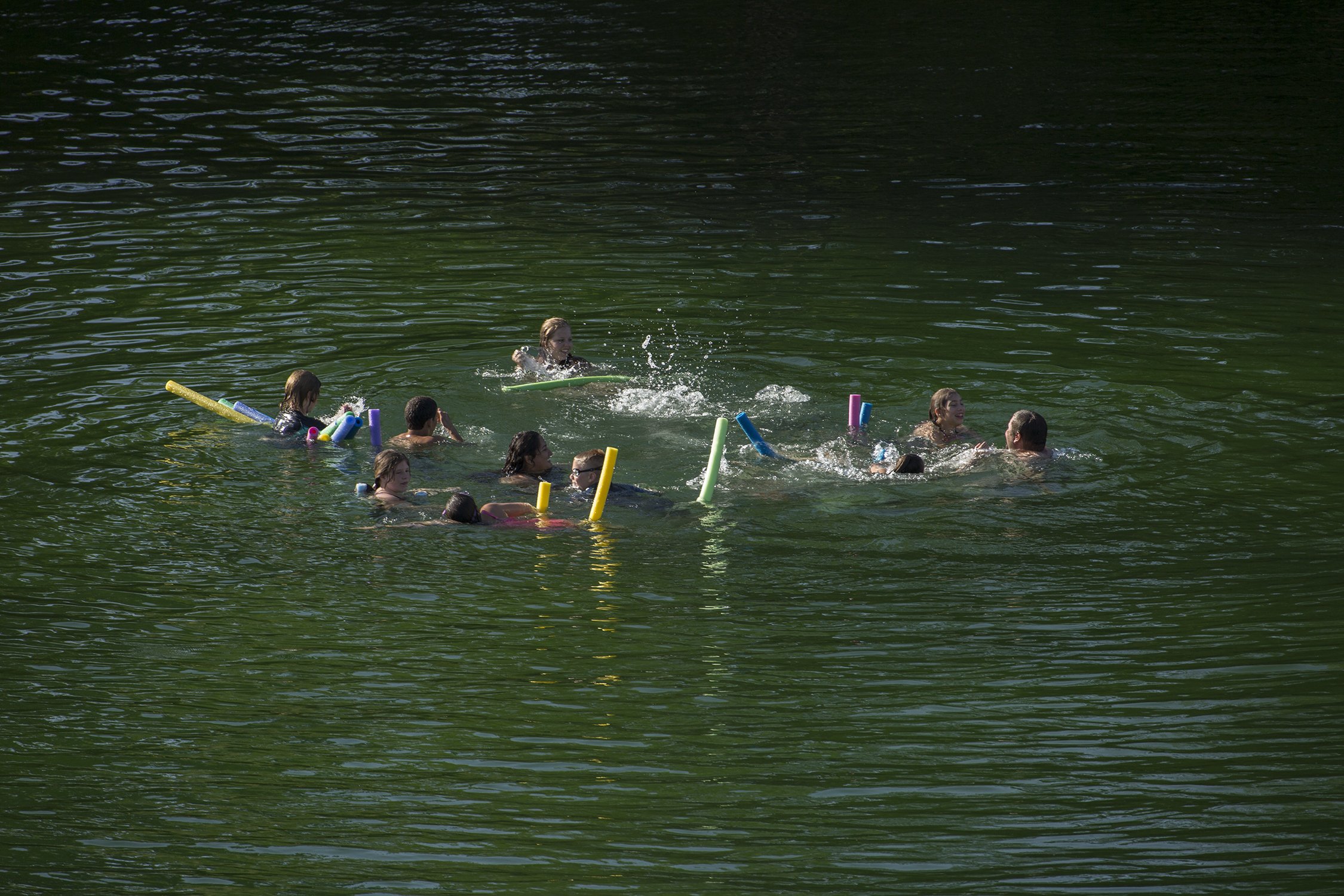

Contact us.
selah@bambergerranch.org
830.868.2630
2341 Blue Ridge Drive
Johnson City, TX 78636
